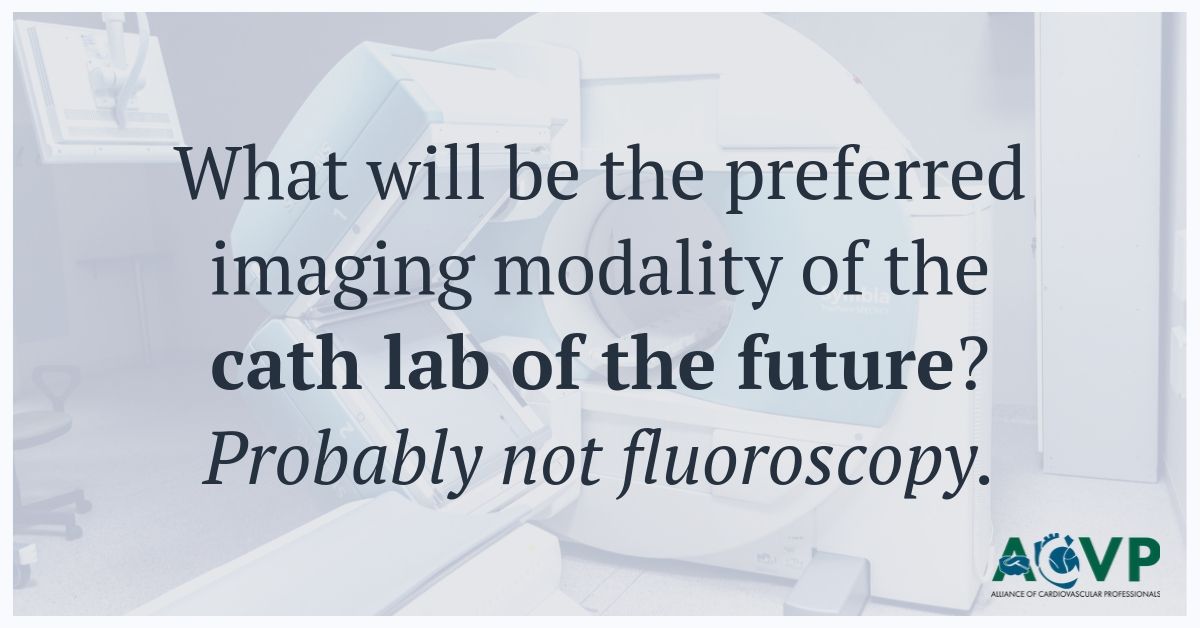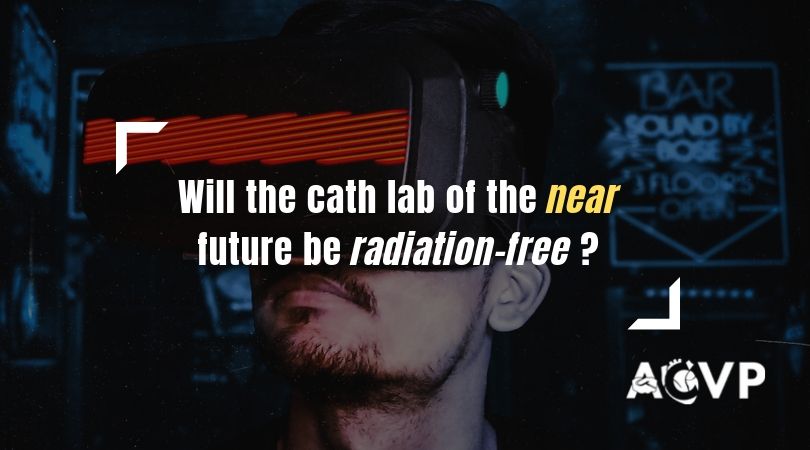Radiation safety has been a hot topic for continuing education in recent years, but will the cath lab of the future feature fluoroscopy at all? This blog takes a look at future technology developments that may drastically reduce radiation exposure for professionals in the cath lab, or eliminate ionizing radiation altogether.
Growing Recognition of Need for Radiation Safety
Widespread recognition of the need for radiation safety has ballooned due to a confluence of factors. On one hand, advancements in what can be done via percutaenous coronary intervention in the cath lab have introduced longer and more involved procedures which increase the risks of radiation exposure for both patients and clinicians.
On the other hand, experts like Dave Fornell of the publication Diagnostic and Interventional Cardiology rightly point out that the impact of long-term radiation exposure in interventional cardiology is only just now coming to light, 30 years after the subspecialty's inception. In 2015, for example, we published a blog series about non-physician professionals in the cath lab reporting more work-related pain due to wearing radiation protective gear.
A proliferation of best practice resources now exist to help clinicians reduce radiation exposure, like the 2018 Expert Consensus Document on Optimal Use of Ionizing Radiation in Cardiovascular Imaging, or the Society for Cardiovascular Angiography & Inteventions (SCAI)'s Quality Improvement Toolkit resource on radiation safety.
Of course, these resources are reflective of the status quo, and not predictive of the cath lab of the future—or even the near future—an environment where new technology may drastically reduce radiation used or eliminate the need for ionizing radiation entirely.

The Cath Lab of the Future Won't Feature Fluoroscopy
With a more forward-thinking lens, it seems likely that it is a question of when rather than if fluoroscopy and x-ray angiography will be relegated from the cath lab environment.
Using it every day and developing deep expertise in reading its images, as cardiovascular professionals do, it might be easy to forget that fluoroscopy is a suboptimal imaging modality for percutaneous coronary interventions. "There are... inherent limitations to angiography, with the main issue being it does not show soft tissue anatomy while all the interventions it is used for navigate or implant devices in soft tissue," writes Fornell of DAIC in a 2016 article discussing a possible replacement for x-ray angiography in the cath lab. "Fluoroscopy has been used for interventional imaging mainly because of the lack of anything better, until now," he writes.
Electromagnetic imaging, three-dimensional transesophageal echo (3D TEE) and magnetic resonance imaging (MRI) have all been used in a cath lab environment to produce high quality and three-dimensional visualizations of soft tissue anatomy. For equipped facilities, one or multiple of these modalities may already be in use to reduce reliance on fluoroscopy.
And while limitations and drawbacks exist, like strict metal safety protocols in the use of MRI, or the need for endotracheal intubation for TEE, technology on the horizon may eliminate those barriers—and the pace of change may bring that technology to a cath lab near you sooner than you might think.
A recent 2019 article about the cath lab of the future noted that the pace of change is rapid and exponential. "We have now advanced to an even more rapid pace of innovation, as access to engineering and design necessities has exploded," writes Vikash Goel of Centerline Biodmedical. "Advanced forms of imaging with reduced dependence on ionizing radiation are becoming increasingly available."
And if feasible technology on the near horizon could provide more useful, three-dimensional images of soft tissue anatomy and eliminate the potentially adverse effects of radiation on patients and clinicians, entirely, wouldn't that change be a priority of provider organizations?
What do you think?? Leave a comment, below!

The major problem with cardiac cath based doctors, nurses, cardiovascular technologists, radiologic technologists, surgical technologists and nursing assistants working in the environment is that they are not educated on radiation physics, biology and safety at the levels the doctors and support staff were taught years ago.
I have always been a CV Radiologic Technologist who has always focused on radiation safety of peers and patients. Even with modern digital imaging devices, patients develop radiation burns because the imaging equipment is not used properly and are subjected to lengthy radiation dosages during prolonged procedures.
One question I ask doctors and support staff members what is the least distance a team member should stand from the radiation source during fluoroscopy and cineangiography. 99% of the persons asked have not answered the question with a valid answer. What area of the body of attending doctor, scrub assistant and circulating support staff is heavily radiated during procedures? The answer for 1st question is 1 meter from the radiation tube filter area. Answer to #2 is lower legs which are not covered completely with lead aprons.
The EP labs have been pioneers in no fluro procedures. It is a step in the right direction for Cath labs. Glad to see the push for overall patient and staff safety